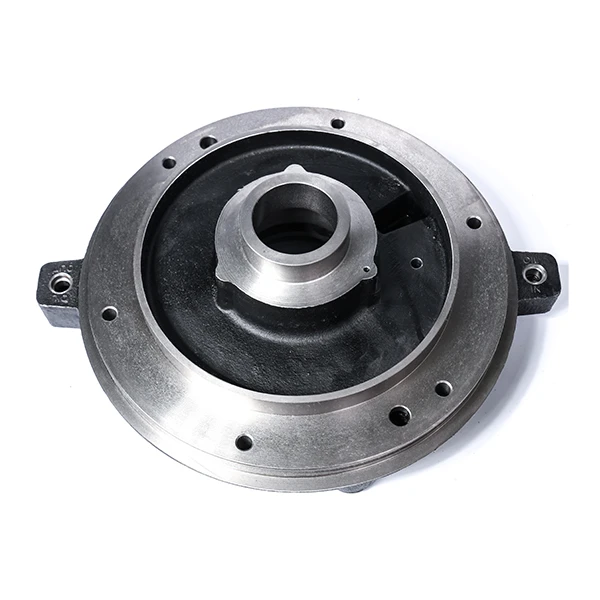Mobile:+86-311-808-126-83
Email:info@ydcastings.com
Exploring Three Distinct Types of Impellers for Various Applications in Fluid Dynamics
Understanding the Three Types of Impellers
Impellers are critical components in various types of machinery. They are essential in a range of applications including pumps, compressors, and turbines. An impeller is responsible for transferring energy to the fluid in motion, effectively increasing the velocity and pressure of the fluid. Here, we will discuss the three main types of impellers radial, axial, and mixed flow impellers. Each type has its unique design characteristics and is suited for different applications.
1. Radial Impellers
Radial impellers are designed to exert force in a direction perpendicular to the shaft. The flow enters the impeller near the axis and is expelled radially outward. This movement is typically achieved through blades mounted on a disk-shaped hub. Radial impellers are commonly found in centrifugal pumps, where they are known for their ability to produce high pressure at relatively low flow rates.
The design of radial impellers leads to a high rotational velocity, making them efficient for applications requiring significant pressure increase, such as in water supply systems, hydroelectric pumps, and various industrial processes. Strength is a key factor in the material choice for these impellers since they must withstand the centrifugal forces generated during operation.
Moreover, radial impellers tend to have a more compact design than other types, which allows for a smaller footprint. However, they can be less efficient than axial impellers in applications needing high flow rates, as they may experience higher energy losses due to fluid friction.
In contrast to radial impellers, axial impellers drive the fluid along the axis of the impeller shaft. The fluid enters at one end and is pushed out in a straight line at the other end, similar to how a boat propeller works. This design is particularly effective in applications that require high flow rates and lower pressure increases.
Axial impellers are widely used in situations where large volumes of fluid need to be moved, such as in cooling towers, ventilation systems, and certain types of water taxis. They are characterized by longer and narrower blades that encourage smooth fluid flow along the shaft. The efficiency of axial impellers is generally higher at lower pressure operations, making them ideal for applications where high flow at minor pressure adjustments is necessary.
3 types of impeller

However, the design and operational characteristics also impose some limitations. Axial impellers can suffer from issues such as cavitation, especially if the fluid velocity drops too low, which can lead to inefficiencies and damage over time.
3. Mixed Flow Impellers
As the name suggests, mixed flow impellers combine features from both radial and axial designs, resulting in a unique configuration that enables fluid to be displaced in both directions. These impellers direct the flow at an angle, which allows for a balance between pressure and flow rate.
Mixed flow impellers are commonly used in various industrial scenarios, including wastewater treatment plants and construction sites, where both high flow rates and moderate pressure are needed. They are particularly useful in aeration processes and in systems where flexibility is essential.
This type of impeller is typically designed to handle larger volumes of fluid than a radial impeller while maintaining a higher pressure head than an axial impeller. However, they can also be subject to similar issues as radial and axial impellers regarding cavitation, especially under fluctuating operational conditions.
Conclusion
Understanding the three types of impellers—radial, axial, and mixed flow—is crucial when selecting the right impeller for specific applications. Each type has its advantages and disadvantages, shaped by its design principles and operational characteristics. When engineers design systems requiring fluid motion, they must carefully consider the operational requirements, as well as the potential trade-offs between pressure, flow rate, efficiency, and the application’s specific needs.
Selecting the appropriate impeller type not only enhances performance but can also contribute significantly to the longevity and reliability of the equipment. As technology continues to advance, the designs and materials used in impellers will also evolve, further enhancing their efficiency and applicability across various industries.
-
Why Should You Invest in Superior Pump Castings for Your Equipment?NewsJun.09,2025
-
Unlock Performance Potential with Stainless Impellers and Aluminum End CapsNewsJun.09,2025
-
Revolutionize Your Machinery with Superior Cast Iron and Aluminum ComponentsNewsJun.09,2025
-
Revolutionize Fluid Dynamics with Premium Pump ComponentsNewsJun.09,2025
-
Optimizing Industrial Systems with Essential Valve ComponentsNewsJun.09,2025
-
Elevate Grid Efficiency with High-Precision Power CastingsNewsJun.09,2025











